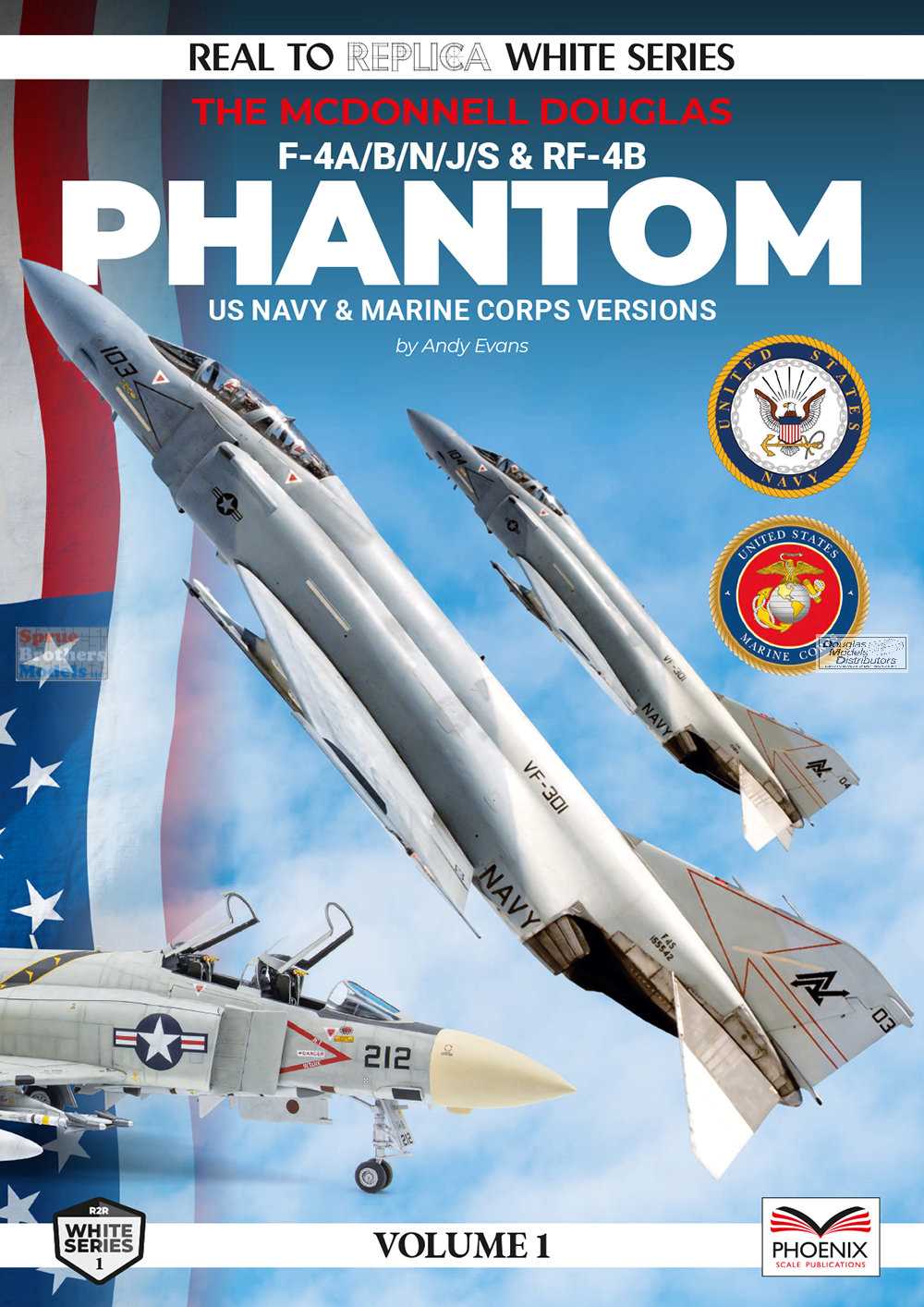Phoenix Scale Publications
PSPWH001 Phoenix Scale Publications - The McDonnell Douglas F-4A/B/N/J/S & RF-4B Phantom (US Navy & Marines Corps Versions)
- SKU:
- PSPWH001
- UPC:
- 9781739772567
- MPN:
- WH001
- Scale:
- Not Applicable
- Subject:
- F-4 Phantom II
Description

By Andy Evans
84 Pages
Full Colour
The iconic F-4 Phantom is one of the most recognisable aircraft ever produced. Initially built for the US Navy, its multi-role abilities as an interceptor, fighter-bomber and reconnaissance platform were quickly adopted by the Marine Corps and first entered service in 1961. So impressed with the Navy’s new aircraft, the US Air Force also ordered the Phantom, and production ran from 1958 to 1981 with a total of 5,195 aircraft built, making it the most produced American supersonic military aircraft in history, and cementing its position as an iconic combat aircraft of the Cold War. A total of forty-five F-4As were built, however, none saw combat, and most ended up as test or training aircraft. The USN and USMC received the first definitive Phantom, the F-4B which was equipped with the Westinghouse APQ-72 radar, a Texas Instruments AAA-4 Infrared search and track pod under the nose, an AN/AJB-3 bombing system in 1961 and VF-121 ‘Pacemakers’ taking the first examples at NAS Miramar. The F-4J improved both air-to-air and ground-attack capabilities and deliveries began in 1966 and ended in 1972 with 522 built. It was equipped with the Westinghouse AN/AWG-10 Fire Control System (making the F-4J the first fighter in the world with operational look-down/shoot-down capability), a new integrated missile control system and the AN/AJB-7 bombing system for expanded ground attack capability. The F-4N (updated F-4B) with smokeless engines and F-4J aerodynamic improvements started in 1972 under a Navy-initiated refurbishment program called ‘Project Bee Line’.
The F-4S model resulted from the refurbishment of 265 F-4Js with J79-GE-17 smokeless engines, an AWG-10B radar with digitised circuitry for improved performance and reliability, a Honeywell AN/AVG-8 Visual Target Acquisition Set or VTAS (world’s first operational Helmet Sighting System), avionics improvements, airframe reinforcement and leading-edge slats for enhanced manoeuvring. With the introduction of the F-14 Tomcat and F/A-18 Hornet, by 1987 the last F-4Ss were being retired from deployable USN squadrons, and on 25 March 1986, an F-4S belonging to the VF-151 ‘Vigilantes’ became the last active-duty US Navy Phantom to launch from an aircraft carrier, in this case the USS Midway. On 18 October 1986, an F-4S from the VF-202 ‘Superheats’, made the last-ever Phantom carrier landing while operating aboard USS America, and in 1987 the last of the Naval Reserve-operated F-4S aircraft were replaced by F-14As. The last Phantoms in service with the Navy were QF-4N and QF- 4S target drones operated by the Naval Air Warfare Center at NAS Point Mugu. Likewise, in the early 1980s, US Marine Corps Phantom squadrons began to transition to the F/A-18 and in January 1992, the last Marine Corps F-4S Phantom was retired by the ‘Cowboys’ of VMFA-112 at NAS Dallas, after which the squadron re-equipped with F/A-18 Hornets.
This is the first of a five book collectable series that will build into a comprehensive library on the F-4 Phantom in US Navy and Marine Corps Service, US Air Force Service, European Operators, Middle Eastern Operators and Asian Operators. Each book has comprehensive historic information on each Phantom variant, its operators and combat roles, with colour profiles and full model builds included. This will be a must have series for the Phantom aficionado and modeller alike.

